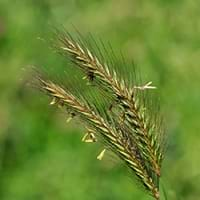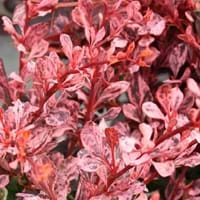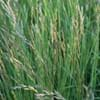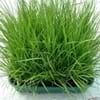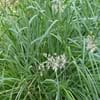Life Span
Perennial
Perennial
Origin
North America, South America, Europe, Southern Africa, Asia
Eastern Asia, Japan
Types
Not Available
Not Available
Habitat
meadows, Pastures, Wet lands
Old fields, stream banks
USDA Hardiness Zone
Not Available
4-8
AHS Heat Zone
Not Available
8-5
Sunset Zone
Not Available
A3, 2b, 3a, 3b, 4, 5, 6, 7, 8, 9, 10, 11, 12, 13, 14, 15, 16, 17, 18, 19, 20, 21, 22, 23, 24
Habit
Not Available
Oval or Rounded
Minimum Height
Not Available
Minimum Width
Not Available
Flower Color
Yellow Brown
Yellow, Yellow green
Flower Color Modifier
Bicolor
Not Available
Fruit Color
Not Available
Red orange
Leaf Color in Spring
Green, Light Green, Blue Green, Gray Green
Light Green
Leaf Color in Summer
Light Green
Green
Leaf Color in Fall
Not Available
Purple, Orange, Burgundy, Crimson
Leaf Color in Winter
Not Available
Not Available
Leaf Shape
Oblong
Obovate
Plant Season
Not Available
Spring, Summer, Fall, Winter
Sunlight
Full Sun
Full Sun, Partial Sun
Type of Soil
Loam, Sand
Clay, Loam, Sand
The pH of Soil
Not Available
Acidic, Neutral, Alkaline
Soil Drainage
Well drained
Average
Bloom Time
Spring, Summer
Spring, Late Spring
Tolerances
Deer resistant, Drought, Salt
Pollution, Drought, Salt, Soil Compaction
Where to Plant?
Ground
Ground, Pot
How to Plant?
Seedlings
Seedlings
Plant Maintenance
Medium
Medium
Watering Requirements
Keep the ground moist but not water-logged
Requires regular watering during dry weather
In Summer
Less Watering
Lots of watering
In Spring
Moderate
Moderate
In Winter
Lots of watering
Average Water
Soil pH
Not Available
Acidic, Neutral, Alkaline
Soil Type
Loam, Sand
Clay, Loam, Sand
Soil Drainage Capacity
Well drained
Average
Sun Exposure
Full Sun
Full Sun, Partial Sun
Pruning
No pruning needed in the early stages, Remove damaged leaves, Remove dead branches, Remove dead leaves
Remove damaged leaves, Remove dead branches, Remove dead leaves
Fertilizers
avoid high rate of nitrogen in spring, Nitrogen
All-Purpose Liquid Fertilizer
Pests and Diseases
Fungal Diseases, Head smut, Leaf rust, Stem rot
Red blotch, Sunken patches
Plant Tolerance
Deer resistant, Drought, Salt
Drought
Flowers
Not Available
Insignificant
Flower Petal Number
Single
Single
Edible Fruit
Not Available
No
Foliage Texture
Fine
Medium
Foliage Sheen
Matte
Matte
Invasive
Sometimes
Sometimes
Attracts
Bees, Birds, Butterflies
Birds
Allergy
Not Available
Not Available
Aesthetic Uses
Ground Cover
Borders
Beauty Benefits
Improve skin condition
Not Available
Environmental Uses
Erosion control, Food for animals, soil stabilisation
Air purification
Medicinal Uses
Not Available
Anthelmintic, Antibacterial, Antiseptic, Cancer
Part of Plant Used
Seeds
Fruits, Leaves
Other Uses
Food for animals
Used to make yellow dye
Used As Indoor Plant
No
No
Used As Outdoor Plant
Yes
Yes
Garden Design
Cutflower, Dried Flower/Everlasting, Edible, Wildflower
Edging, Foundation, Hedges, Mixed Border, Rock Garden, Wall
Botanical Name
Hordeum brachyantherum
BERBERIS thunbergii
Common Name
Meadow Barley
Japanese Barberry
In Hindi
meadow barley
Japanese Barberry
In German
Wiese Gerste
Thunberg-Berberitze
In French
orge prairie
Berberis thunbergii
In Spanish
cebada prado
Berberis thunbergii
In Greek
λιβάδι κριθάρι
Japanese Barberry
In Portuguese
cevada prado
Japanese Barberry
In Polish
łąka jęczmienia
Berberys Thunberga
In Latin
pratum hordei
Japanese Barberry
Phylum
Magnoliophyta
Magnoliophyta
Class
Liliopsida
Magnoliopsida
Order
Cyperales
Ranunculales
Family
Poaceae
Berberidaceae
Clade
Angiosperms, Commelinids, Monocots
Angiosperms, Eudicots
Tribe
Not Available
Not Available
Subfamily
Not Available
Not Available
Number of Species
Not Available
Not Available
Importance of Meadow Barley and Rose Glow Barberry
Want to have the most appropriate plant for your garden? You might want to know the importance of Meadow Barley and Rose Glow Barberry. Basically, these two plants vary in many aspects. Compare Meadow Barley and Rose Glow Barberry as they differ in many characteristics such as their life, care, benefits, facts, etc. Every gardener must at least have the slightest clue about the plants he wants to plant in his garden. Compare their benefits, which differ in many ways like facts and uses. The medicinal use of Meadow Barley is Not Available whereas of Rose Glow Barberry is Anthelmintic, Antibacterial, Antiseptic and Cancer. Meadow Barley has beauty benefits as follows: Improve skin condition while Rose Glow Barberry has beauty benefits as follows: Improve skin condition.
Compare Facts of Meadow Barley vs Rose Glow Barberry
How to choose the best garden plant for your garden depending upon its facts? Here garden plant comparison will help you to solve this query. Compare the facts of Meadow Barley vs Rose Glow Barberry and know which one to choose. As garden plants have benefits and other uses, allergy is also a major drawback of plants for some people. Allergic reactions of Meadow Barley are Not Available whereas of Rose Glow Barberry have Not Available respectively. Having a fruit bearing plant in your garden can be a plus point of your garden. Meadow Barley has showy fruits and Rose Glow Barberry has showy fruits. Also Meadow Barley is not flowering and Rose Glow Barberry is not flowering . You can compare Meadow Barley and Rose Glow Barberry facts and facts of other plants too.
